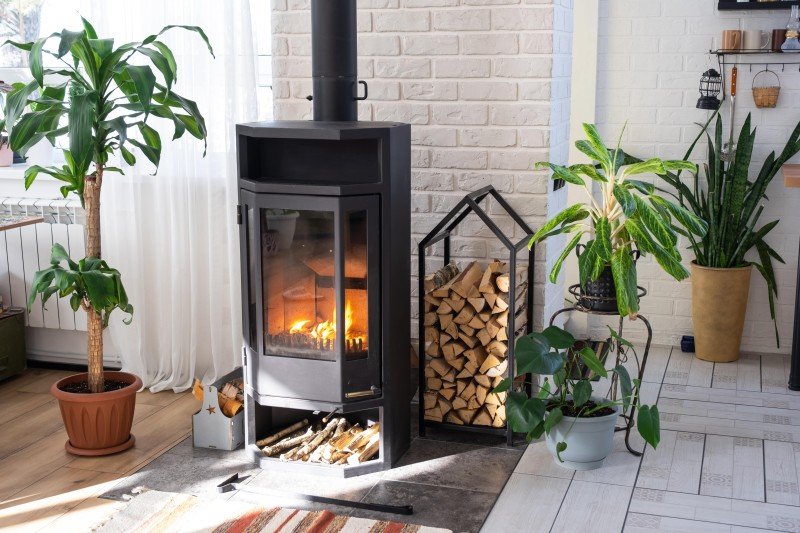15 Reasons To Love Small Fireplaces
A Comprehensive Guide to Small Fireplaces: Efficient Heating and Cozy Living
In a period where energy efficiency and space optimization are ending up being significantly important, small fireplaces have actually emerged as an enticing alternative to traditional, bulky hearths. These compact heating options use warmth and a focal point for any room, increasing both convenience and visual appeal. This article checks out the different kinds of small fireplaces, their benefits, installation factors to consider, and upkeep suggestions, eventually assisting house owners make notified choices when considering these charming heating alternatives.
Understanding Small Fireplaces
Small fireplaces provide a range of styles, including electric, gas, ethanol, and wood-burning models. Each type presents special benefits and design possibilities, making them suitable for various living spaces.
Types of Small Fireplaces
Fireplace Type
Description
Pros
Cons
Electric
Utilizes electricity to create heat. Offers lots of designs, including wall-mounted and freestanding systems.
- Easy to install
- Low maintenance
- No venting needed
- Limited heat output
- May incur higher electricity expenses
Gas
Burns gas or gas. Frequently readily available as logs in a traditional fireplace or modern designs.
- Efficient heat output
- Cleaner than wood
- Easy ignition
- Requires gas line setup
- Some systems require venting
Ethanol
Burns bioethanol, providing real flames without a chimney.
- Eco-friendly
- Portable
- No setup required
- Limited heat output
- Higher fuel expenses
Wood-Burning
Traditional fireplaces that burn fire wood. Often used in more rustic settings.
- Great heat output
- Rich ambiance
- Can be utilized during power failures
- Requires a chimney
- Regular upkeep and cleaning
Advantages of Small Fireplaces
- Space Efficiency: Small fireplaces are ideal for homes, condos, and smaller sized homes. They take full advantage of warmth without using up excessive floor area.
- Cost-Effective Heating: In particular cases, small fireplaces can supplement main heating unit, decreasing total energy costs while producing a more comfy environment.
- Atmosphere and Aesthetics: They supply a welcoming focal point to a space, producing a cozy environment perfect for relaxation and celebrations.
- Versatility: Available in various designs and styles, small fireplaces can match any decor, from modern minimalist to rustic traditional.
Installation Considerations
When contemplating a small fireplace, installation is an important element that can impact the choice of design. Below are helpful factors to consider:
- Local Regulations: Building codes can vary by area; constantly examine regional guidelines before installation.
- Ventilation Needs: Depending on the type, small fireplaces might need various ventilation systems. Gas fireplaces may need venting outdoors, while electric designs do not.
- Power Source: Electric models require proximity to electric outlets, while gas and ethanol models might need a gas line or fuel storage.
- Weight and Structure: Installing wall-mounted units may require reinforced wall areas, whereas free-standing designs are much easier to move.
Upkeep Tips
Like any other home device, small fireplaces require routine upkeep to operate effectively and safely. Here are necessary upkeep tips for different fireplace types:
For Electric Fireplaces:
- Cleaning: Wipe down the unit with a soft fabric to remove dust and keep the heater ducts clear.
- Inspection: Check the power cable routinely for any damages or indications of wear.
For Gas Fireplaces:
- Annual Inspections: Schedule annual examinations by an expert to guarantee safe gas circulation.
- Clean the Logs: Regularly clean the burner and logs to preserve optimum efficiency.
For Ethanol Fireplaces:
- Fuel Storage: Store ethanol fuel safely away from direct sunshine and heat sources.
- Routine Cleaning: Clean the burner after each usage to keep efficiency and avoid soot buildup.
For Wood-Burning Fireplaces:
- Chimney Sweeping: Have the chimney expertly cleaned as soon as a year to avoid creosote buildup.
- Firewood Storage: Only usage dry, experienced wood to minimize smoke and promote effective burning.
Often Asked Questions
1. Can I install a small fireplace myself?
While some electric and ethanol fireplaces are fairly simple to set up, it is suggested to hire a professional for gas and wood-burning systems to guarantee compliance with local building regulations.
2. How much does it cost to run a small fireplace?
The cost will differ depending upon the kind of fireplace. Normally, electric fireplaces might incur greater electricity costs, while wood-burning options can draw from eco-friendly firewood supplies.
3. Do I need an authorization for setup?
Authorizations are usually needed for gas and wood-burning fireplaces due to their installation complexity and safety regulations. Constantly contact Cheap Fireplaces .
4. How long can I run an electric fireplace?
The majority of electric fireplaces can run for long periods; nevertheless, it's advised to follow maker guidelines to prevent getting too hot or damaging the system.
5. What type of small fireplace is best for a small space?
This mainly depends upon specific requirements. Electric models are versatile and simple to install, while gas and ethanol options supply real flames with efficient heat output.
Small fireplaces represent a functional and trendy alternative for those seeking effective heating options in compact home. With various types readily available, homeowners can select models that line up with their visual preferences and space requirements. By understanding the installation procedures and routine upkeep required, people can enjoy the convenience and atmosphere that small fireplaces use for many years to come. Whether for a cozy evening in your home or a welcoming space for events, small fireplaces are an enduring aspect of modern and traditional design alike.
